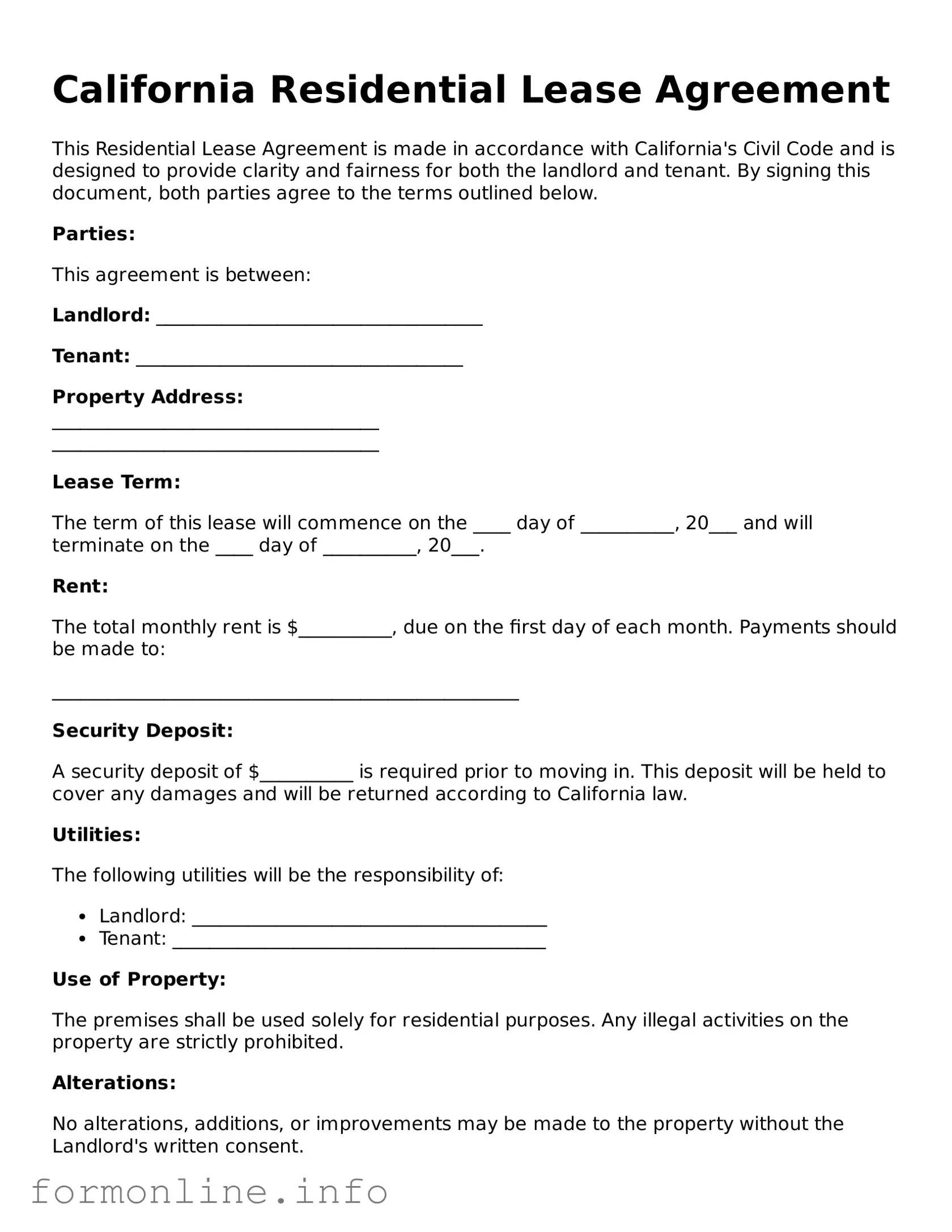California Residential Lease Agreement
This Residential Lease Agreement is made in accordance with California's Civil Code and is designed to provide clarity and fairness for both the landlord and tenant. By signing this document, both parties agree to the terms outlined below.
Parties:
This agreement is between:
Landlord: ___________________________________
Tenant: ___________________________________
Property Address:
___________________________________
___________________________________
Lease Term:
The term of this lease will commence on the ____ day of __________, 20___ and will terminate on the ____ day of __________, 20___.
Rent:
The total monthly rent is $__________, due on the first day of each month. Payments should be made to:
__________________________________________________
Security Deposit:
A security deposit of $__________ is required prior to moving in. This deposit will be held to cover any damages and will be returned according to California law.
Utilities:
The following utilities will be the responsibility of:
- Landlord: ______________________________________
- Tenant: ________________________________________
Use of Property:
The premises shall be used solely for residential purposes. Any illegal activities on the property are strictly prohibited.
Alterations:
No alterations, additions, or improvements may be made to the property without the Landlord's written consent.
Termination:
- Either party may terminate this lease with a written notice of ____ days.
- Notice must be served in accordance with California law.
Signatures:
By signing below, both parties agree to comply with all terms specified in this lease.
Landlord Signature: ____________________________ Date: ___________
Tenant Signature: _____________________________ Date: ___________
This document represents a binding agreement as long as it is signed. Both parties should retain a copy for their records.
